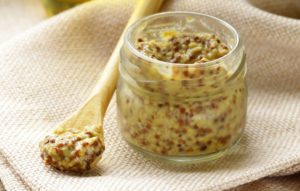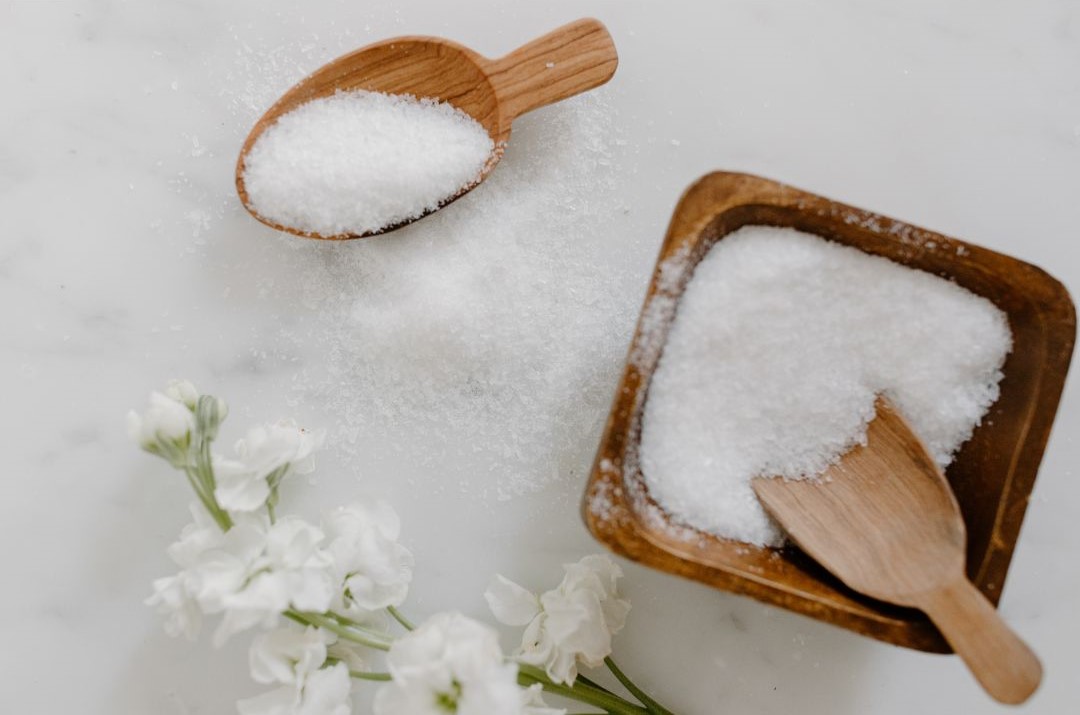How do I lessen the use of salt in my cooking and still create food that tastes appealing?
– Question from LCK’s Cooking Well Reader
This is a great question and one that is often asked.
Salt is a key cooking and baking ingredient, providing a flavor boost to a dish that tastes flat, balancing bitterness and sweetness, helping foods retain other nutrients, and more. Many recipes will simply not work well without the addition of at least a small amount of salt. It is also commonly used in food processing and manufacturing for its flavor and preservation capabilities.
WHAT’S THE PROBLEM WITH ADDING SALT?
Sodium is found in most foods in nature, and our bodies require a certain amount to function properly. However, most of us ingest much more sodium than is healthy for us. Too much sodium in our diets increases our risk of developing high blood pressure, which can lead to stroke, heart disease, and other related conditions. The good news is we can lower that risk by reducing sodium in our diets.
A recent study published in the Journal of the American Medical Association (JAMA Network, Nov 11, 2023) stated some pretty encouraging findings about the effects of salt reduction on blood pressure for middle-aged and older adults. The study found that moving from a high-sodium diet to a low-sodium diet (reducing salt by 1 teaspoon per day) provided as much benefit as that which is gained from a commonly prescribed blood pressure medication. Maybe the most surprising aspect of the study for me was that the results were seen in only one week. Those who continued taking blood pressure medications while participating in the study received added benefits from reduced salt intake. These findings align with the Food as Medicine philosophy – that the foods we eat and the ingredients we use in cooking can greatly affect and benefit our health.
While salt is an important cooking ingredient, there are a variety of cooking strategies that build flavor and lessen the amount of salt needed to make foods taste good. If your tastebuds are used to high-sodium foods, it will take some time to unwind and adapt them to lower-salt dishes. I encourage you to give it time and stick with it, your tastes will adjust, and your body will thank you. In the end, you may find yourself enjoying new and more complex flavors, and decide that foods simply taste better.
- One important note: it is wise for anyone with health concerns to consult with their medical professional before making changes to their diet.
FLAVOR-BUILDING TIPS
No matter where you fall on the sodium intake spectrum, the strategies listed below are wonderful cooking techniques widely used by chefs for building flavorful dishes. Start by using these strategies, then consider adding a small amount of salt later in the cooking process or afterward, only if necessary.
1. BEGIN WITH GOOD QUALITY INGREDIENTS
This may sound very basic, but truly, using good-quality ingredients is the foundation of a flavorful dish. Poor-quality ingredients simply will not possess the flavor horsepower you desire. This does not mean constantly splurging on expensive items or that “expensive” equals good quality. Many value ingredients fit the bill. Be selective, key into what’s in season, and seek out high-quality, low- or minimally-processed brands of pantry, frozen, and refrigerated items.
2. CREATE A FLAVORFUL, AROMATIC BASE
There’s a reason that many recipes begin with “saute the onions, carrots, and…” Creating a flavorful base of chopped aromatics adds character to dishes. A few common flavor bases by type of cuisine include:
- French, Italian, German – onions, carrots and celery, possibly leeks or fennel
- Cajun “Holy Trinity” – onions, celery, green pepper
- Asian – garlic, scallions, onions, or shallots, ginger
- Indian – onions, garlic, chilis, ginger
- Middle Eastern – onions or scallions, garlic, tomatoes, dried fruit
- Latin – onions, garlic, tomatoes, bell pepper

photo: Love + Craft Kitchen
3. REMOVE WATER CONTENT TO CONCENTRATE FLAVORS
Many foods naturally contain water which helps maintain freshness but can dampen the flavor of a dish during cooking if not removed.
- “Sweat” (over low heat), sauté (over medium heat), or roast (using high heat) vegetables to remove water content.
- Reduce sauces, stocks, wine, juices, or balsamic vinegar by simmering over low or medium heat to deepen flavors.
4. USE FRESH SEASONINGS
Since herbs and spices play a strong supporting role in cooking, it’s important to maximize their flavor by paying attention to their freshness.
- Shop for fresh and dried herbs and spices at quality grocers, farmers’ markets, or specialty food shops. Or, grow your own!
- Buy small amounts so they do not go bad or lose their flavor.
- Smell and taste them to see if they are flavorful.
- Store them properly.
- To coax the most flavor out of herbs, add them to liquids in a recipe. To maximize the flavor of spices, add them to the fats in a recipe.
5. ADD ACIDS
Acids bring out the brightness of food, heighten flavors, and reduce the need for additional salt. Try adding small amounts of one or two of these during cooking, near the end, or just before serving.
- Citrus juice or zest
- Vinegar
- Cider
- Wine or Spirit

photo: iStock
6. USE HEALTHIER FATS TO YOUR ADVANTAGE
Fats add richness and creaminess which enhances the flavor and texture of foods. Fats also assist other ingredients in releasing their goodness. Choose healthier, less processed fats made from natural ingredients such as avocados, olive or avocado oil, nut, seed or infused oils, regular or Greek yogurt, plant-based milk, sour cream, real mayonnaise or cottage cheese without added sugar or artificial additives.
7. HIGHLIGHT NATURAL FLAVORS WITH SIMPLE COOKING PROCESSES
Use simple cooking processes to bring out the natural flavor of ingredients and elevate their flavor profiles.
- Lightly brown, or caramelize vegetables
- Roast vegetables, proteins, legumes
- Pan-sear proteins
- Toast spices, nuts, and seeds
8. SCRAPE UP THOSE “BROWNED BITS” (aka “deglaze the pan”)
Those browned bits on the bottom of the pan after searing or sautéing foods are flavor gems! To loosen and incorporate them into the recipe, add a small amount of wine or other alcohol, diced tomatoes, tomato sauce or paste, cider, juice, water or broth. Allow the liquid to simmer gently for 30 – 60 seconds, then use a wooden spoon to scrape up the bits. They will melt into the other recipe ingredients and provide a savory richness.

photo: Olga Kriger on Canva
9. ADD FLAVOR-BOOSTING CONDIMENTS
Condiments are great flavor boosters for soups, stews, chilis, sauces, casseroles, pasta dishes, vegetables, and proteins. Add them during the cooking process or as a flavorful garnish when serving.
Look for low-sodium, low- or no-sugar varieties.
- mustard
- horseradish
- wasabi
- miso
- coconut aminos
- soy sauce
- fish sauce
- chipotle peppers
- hot sauce
- tapenades
- salsa
- pesto
- chutney
- red bell pepper spread
10. USE LOW-SODIUM MARINADES AND SAUCES
Marinades are one of the easiest ways to infuse flavor into fish and seafood, poultry, meat, vegetables, legumes, and tofu. The marinating process can take as little as 15 – 30 minutes for softer proteins, or several hours for more dense proteins.
Sauces can transform plain foods into something quite special very quickly. Add a dollop of a creamy, herbaceous, vegetable, or spiced sauce to proteins, vegetables, or fruits as an easy finishing touch.
For the best flavor results, choose marinade or sauce recipes that are made with high-quality oils, vinegar or other acids, herbs, and spices, and have a low salt content.
Salt is a key ingredient in our kitchens, but too much is not a good thing. Using flavor-building strategies is just as essential to cooking. They can and should become second nature for creating flavorful dishes that support better health and well-being.
photo: Love + Craft Kitchen
RECIPE
Try this Caribbean-inspired recipe that incorporates several of the flavor-building strategies listed above to make a lower-salt dish.
SHARE
What do you do to lower the use of salt in your cooking? Share your techniques with us in the comments section.
Thanks for reading!
Main photo by Tara Winstead on Pexels
© 2024 Love + Craft Kitchen, LLC, All Rights Reserved


Recent Comments